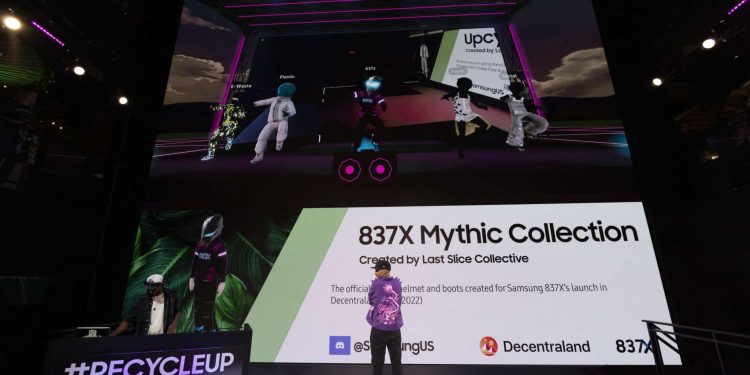Recently, Razorfish (part of Publicis Groupe) rolled out new services dedicated to launching brands on Web3 and supporting activations in emerging virtual spaces. For brand marketers scratching their heads at all the possibilities, and seeking to find real opportunities within all the buzz, the perspective from a top agency is welcome guidance.
There’s a rationale behind the new services from Razorfish, which are organized under three primary Web3 offerings, called Razorfish Reef, Razorfish Wave and Razorfish Drop. The offerings line up with three areas any brand needs to have covered in Web3 — content, networking and virtual goods.
“In this new digital landscape, experience drives everything, so it made sense that we provide a suite of offerings focused on the creation, production and activation of these new dynamic experiences and spaces, and the products and people that inhabit them,” Cristina Lawrence, Razorfish’s EVP, consumer and content experience, told us.
What is Web3? Over the last year, many brands have pivoted to emerging Web3 platforms. They are sometimes referred to as the “metaverse,” and often they are linked to gaming and virtual worlds. A large swath of younger Gen Z consumers flock first to these platforms and build strong communities around them. So that’s why this new designation, Web3, is used by marketers — to distinguish from legacy Web2 social platforms like Facebook and Instagram.
As new Web3 communities emerge, there is also a need for brands to build bridges between Web2 and Web3 platforms, so this is also a main objective at Razorfish.
In Web3, Razorfish puts an emphasis on “open metaverse” worlds, like Decentraland, where users can explore and brands can incorporate blockchain-based NFT activations. They also support brands reaching audiences in “closed metaverse” platforms (like Fortnite and Roblox).
“We’re also finding that social platforms like Discord are becoming increasingly important,” said Lawrence. “Discord is taking on the role of a brand’s ‘community hub’ for metaverse/Web3 activations, and bridges Web2 and Web3 community ecosystems.”
Dig Deeper: Samsung expands presence on Discord
Content. The Razorfish Reef offering tackles the production of content at scale for Web3 experiences, including consumer experiences, metaverse influencer marketing and ecommerce plays.
“Great content needs to reflect the shared values and passions of the community it’s serving, while also being adaptive,” said Lawrence. “The Web3 realm offers plenty of untapped value in the relationship brands can develop with younger audiences, while enabling brands to be accessible for all, and move beyond storytelling to ‘story living.’”
This year, Razorfish partnered with Samsung to launch their Samsung 837X virtual experience, which connects consumers on Decentraland and Discord to Samsung’s flagship store in New York through hybrid experiences like the recent Climate Week NYC fashion show.
Web2/Web3 cross-channel experiences. Razorfish doesn’t see Web2 going away anytime soon. “We see Web3 as additive to Web2, and a complete digital ecosystem,” Lawrence said.
She added, “We shouldn’t think of consumers moving over from Web2 to Web3 — they are bouncing in and out of these different digital landscapes throughout their day to do whatever it is that they want to do with their digital lives. Remember, in many cases, these Web3 natives are using Web2 social platforms to talk about what they’re doing within their Web3 lives, like talking about their latest NFT projects.”
The Razorfish Wave offering provides community building and management across platforms using human- and machine-based methods, with an emphasis on 24-7 “always-on” moderation, since these are living communities, as opposed to “one-off” events.
Dig Deeper: What is the metaverse and how can we get there?
NFTs and virtual goods. Razorfish Drop is the offering that covers NFT drops, virtual goods and direct-to-user opportunities. Plenty of brands have dropped collectible NFTs, but the question remains — what next? How can brands maintain the momentum and keep consumers engaged? Do customers want to collect an NFT for bragging rights, do they want a virtual piece of swag to show off with their avatar, do they want it to unlock special access to events or discounts on real-world purchases?
“At this time, a testing mindset is critical for brands to learn within this new digital landscape,” said Lawrence. “Nothing is more effective at doing this than quick-turn pilots within the metaverse/Web3 ecosystem. Most importantly, this is a creator-and-builder-driven landscape, so testing and learning is also about ‘earning’ the right to build relationships with these consumers via these new contexts.”
Why we care. It’s all about authenticity and fitting into these communities. That’s why Web3 activations are a long-term commitment by brands. That have to “earn the right” to this audience’s attention, as Lawrence said.
While brands and agencies test and learn, the space will continue to evolve. That’s why definitions for terms like Web3 and metaverse are still in flux. For some marketers and Web3 creators, the emphasis is on open platforms and interoperability. But that’s not the metaverse that exists today, which is much more siloed.
It comes back to meeting customers where they are, and a lot of them are spending time on Roblox, Fortnite and Discord, so the main goal is to bridge these platforms with relevant experiences and context.
Dig Deeper: How Adidas builds metaverse experiences and Web3 partnerships
Read the full article here








